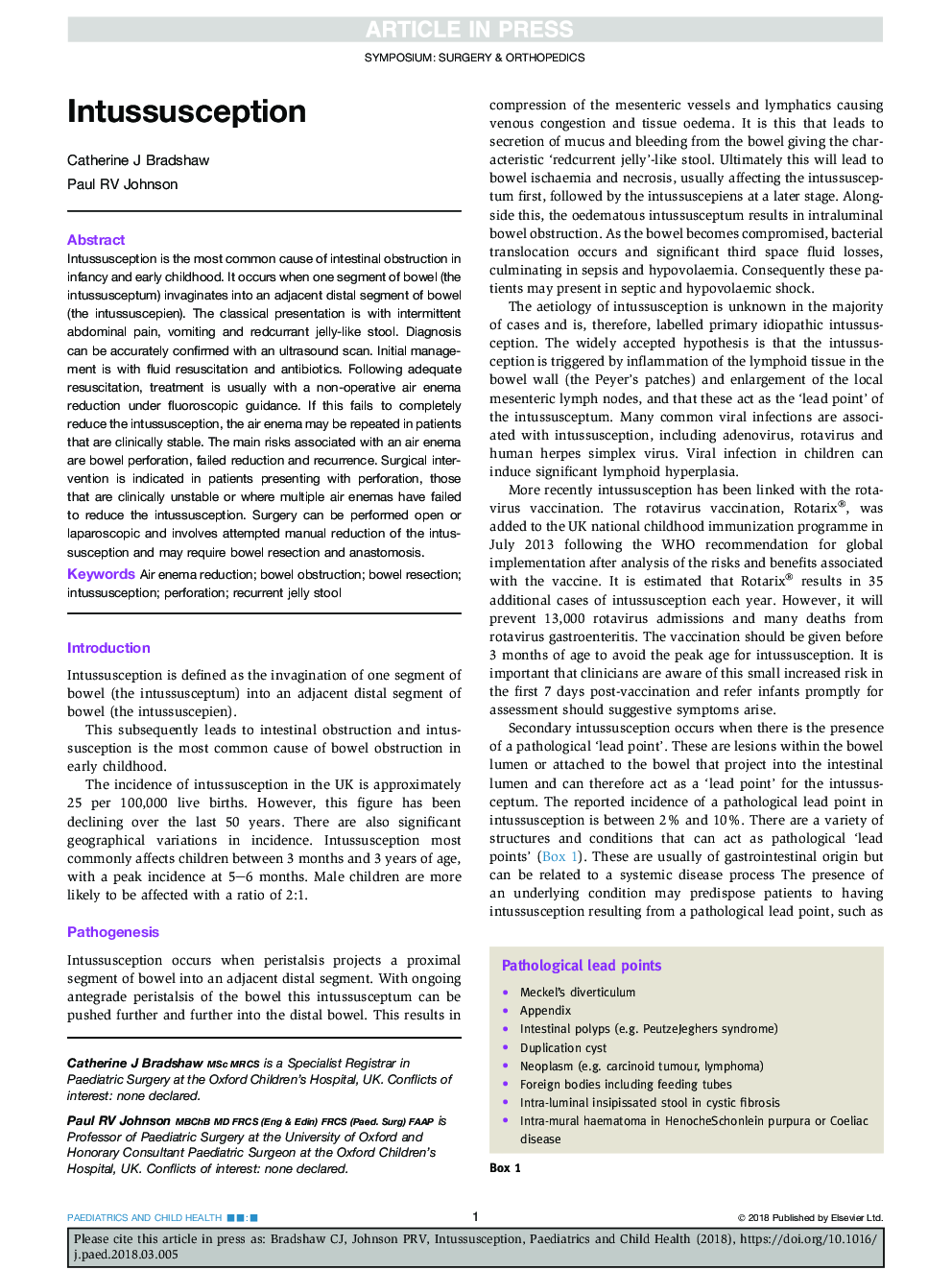| Article ID | Journal | Published Year | Pages | File Type |
|---|---|---|---|---|
| 8813095 | Paediatrics and Child Health | 2018 | 5 Pages |
Abstract
Intussusception is the most common cause of intestinal obstruction in infancy and early childhood. It occurs when one segment of bowel (the intussusceptum) invaginates into an adjacent distal segment of bowel (the intussuscepien). The classical presentation is with intermittent abdominal pain, vomiting and redcurrant jelly-like stool. Diagnosis can be accurately confirmed with an ultrasound scan. Initial management is with fluid resuscitation and antibiotics. Following adequate resuscitation, treatment is usually with a non-operative air enema reduction under fluoroscopic guidance. If this fails to completely reduce the intussusception, the air enema may be repeated in patients that are clinically stable. The main risks associated with an air enema are bowel perforation, failed reduction and recurrence. Surgical intervention is indicated in patients presenting with perforation, those that are clinically unstable or where multiple air enemas have failed to reduce the intussusception. Surgery can be performed open or laparoscopic and involves attempted manual reduction of the intussusception and may require bowel resection and anastomosis.
Related Topics
Health Sciences
Medicine and Dentistry
Perinatology, Pediatrics and Child Health
Authors
Catherine J. Bradshaw, Paul R.V. Johnson,
